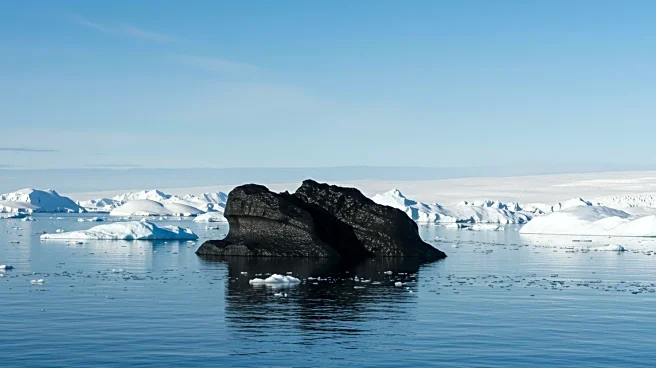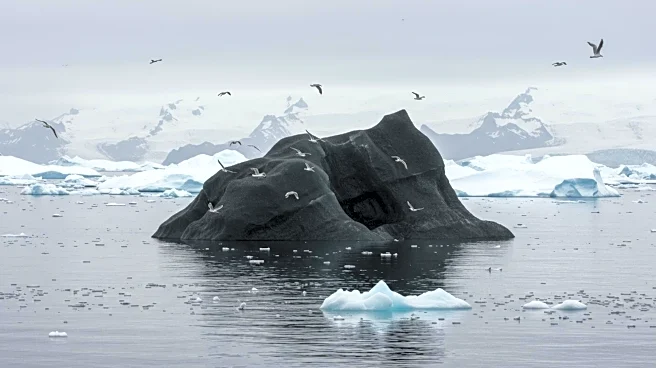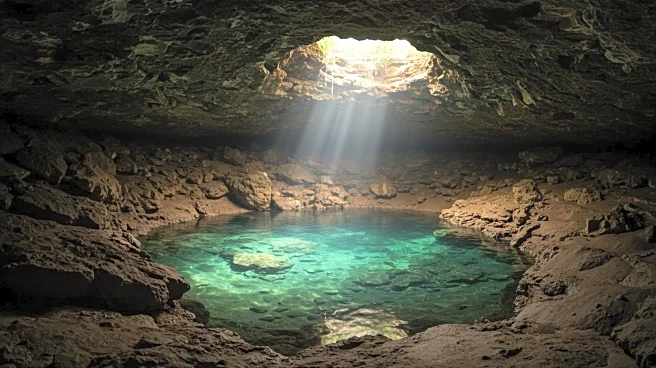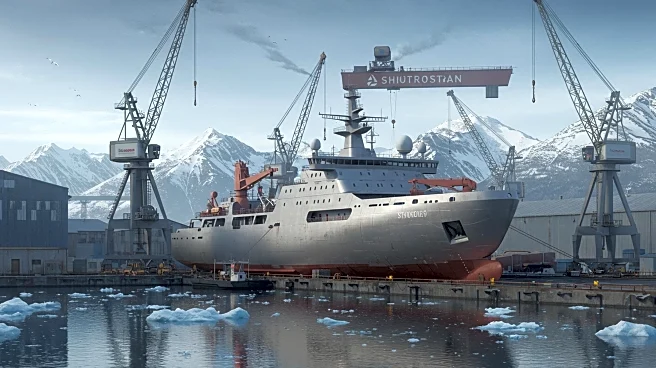What's Happening?
A Faroese fisherman, Hallur Antoniussen, discovered a black iceberg off the northeast coast of Canada, near Carbonear. This unusual iceberg, characterized by its dark color and geometric precision, has left scientists puzzled. The iceberg's appearance challenges existing knowledge about Arctic ice formations, prompting various scientific theories. Dr. Lev Tarasov, a glaciologist, suggests the darkness may be due to accumulated sediments embedded within the ice over millennia. Other hypotheses include volcanic activity or meteorite impact dust as potential sources of discoloration. The iceberg's dense structure, lacking visible air pockets, suggests extreme compression over thousands of years, a characteristic found in deep glacial layers.
Why It's Important?
The discovery of the black iceberg has significant implications for understanding Arctic glacial dynamics and climate patterns. It may indicate changes in traditional calving patterns linked to climate shifts. The iceberg's ancient ice layers could provide insights into Earth's environmental history, including past volcanic eruptions and atmospheric composition variations. This discovery highlights the need for further research into unusual iceberg formations, which could reveal crucial information about ancient climate conditions and glacial systems.
What's Next?
The scientific community is prioritizing the rapid documentation and study of similar iceberg formations before they drift into warmer waters. Advanced sampling techniques are needed to determine the precise composition and age of these ice structures. International collaboration between Arctic research stations, maritime observers, and climate scientists is essential to establish a comprehensive monitoring network. Research priorities include developing rapid sampling protocols, advanced imaging techniques, and long-term monitoring of glacial calving patterns.
Beyond the Headlines
The black iceberg represents a physical manifestation of ancient environmental conditions, potentially containing trace elements that could reveal information about Earth's past. As climate conditions evolve, such ancient ice formations may become more common, each carrying unique stories from our planet's complex environmental history. This discovery serves as a reminder of the surprises that Earth's frozen archives continue to reveal.












